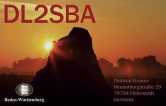Comparison between an unmodified MH-31 microphone (dynamic mc) at my FT-818 in SSB and a modified (electret capsule)
All data measured using the ELV Energy Master Profi-2 Energy Master Profi-2:
One of my HAM fellows has build a new 2kW HF amplifier. Together with his SDR ANAN-100 he gets really impressive IM3 values.
This inspires me also to do some measurements on my existing HF transceivers - K3 & KX3. For this I needed a two-tone generator.
Ich habe die Firmware für die Hamware Tuner um den Yaesu FT890 erweitert.
In Verbindung mit dem Logbuchprogramm UCXLog folgt der Tuner automatisch der eingestellten Frequenz.
Nähere Infos sind hier zu finden.
Ich habe die Firmware für die Hamware Tuner um den Yaesu FTDX-5000 erweitert.
In Verbindung mit dem Logbuchprogramm Swisslog folgt der Tuner automatisch der eingestellten Frequenz.
Nähere Infos sind hier zu finden.
I have some stuff for sale. Please contact me by Diese E-Mail-Adresse ist vor Spambots geschützt! Zur Anzeige muss JavaScript eingeschaltet sein! if you're interested. Prices are negotiable.
This is the way I got PORTAINER running on my DS218+
Configuration of SONOFF TH16 module with current TASMOTA FW
Here you can find the latest NOAA satellite pictures received at JN48OQ
I found a very interesting air quality sensor board from the Germany company OhmTech on Tindy. One of this magic Bosch Sensortec sensor - the BME680 - is used in conjunction with an STM032F72 microcontroller to give a neat "USB-sensor-stick":
Here are some impressions on contest I've participated over the last years ...
To protect the fragile LimeSDR mini PCB I placed the SDR inside an aluminium case.
My Mosquita got a new housing as described in this post. As you can see, there is still enough room for a memory morse keyer.
Here some pictures of the recent SSTV transmission from ISS. They are received using a cheap SDR stick and the NOAA antenna from WIMO under the roof abt. 7m above ground. Decoding is done using MMSSTV.
Santa brought me a new Synology Ds218+ NAS :-)
